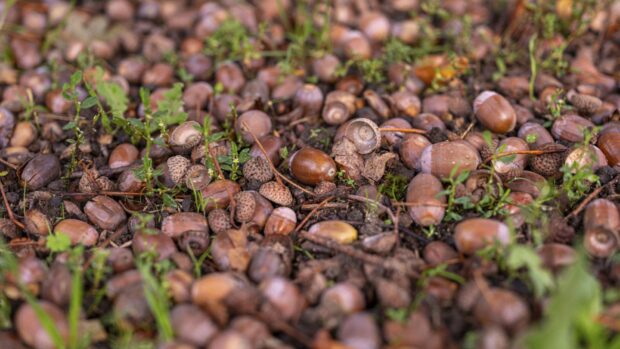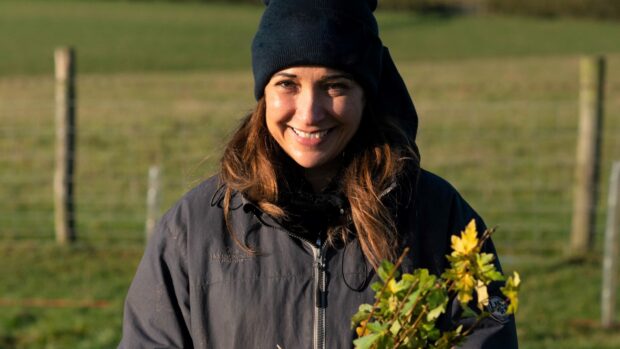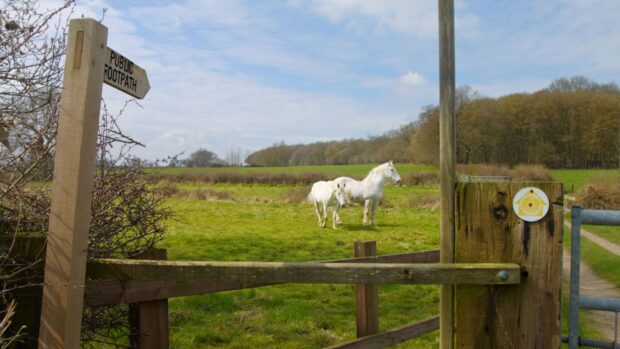When you are fencing horse paddocks, you need to consider safety and durability, as well as price. Your fencing is there to contain and protect your horse, but it has to survive the attentions of horses that bite, chew, kick, paw and barge against their surrounding enclosure. Horse fencing is a fine art, using tough materials.
One of the classic mistakes made by the novice horsekeeper is the decision to keep the existing fencing of a paddock because “it looks fine”. It was good enough for the cows and sheep, so it must be ok for ponies and horses.
In the long-term, horses need specialist fencing in paddocks to keep them within bounds and guard them against injury. Barbed wire and sheep mesh are dangerous; hedges have tempting gaps, and dry stone walls tend to fall apart.
As one fencing contractor says: “You just have to see one horse caught up by the foot in sheep netting and you would never grudge the cost of something better. It’s a very nasty injury.”
The cheapest way towards something safer is a guard-rail of electric fence. Electrified tape, which is more visible than a simple wire, can keep horses away from chewable wooden rails, barbed wire, shaky walls and weak hedges. It is never very good-looking, but it is quite effective — as long as you remember to charge the battery or organise a link for a mains fencer unit.
Electric fences have an energiser, with a battery or mains connection. This produces high voltage at a controlled current, with a pulse every second or so. This is enough to startle stock, but is quite safe. The energiser is connected to a wire or, preferably, visible tape with wire woven into it, which conducts the electricity but is insulated from the ground.
Electric fencing is often used on plastic posts for strip grazing, which should take place within a securely fenced paddock. Plain wire running through insulators stapled to wooden fence posts is used customarily for strip-grazing cattle, but seems to be less visible to horses. Woven tape — pale in colour — is better, and can be effective when used with a post and wire stock fence about 4ft high.
Safety and suitability govern the choice of fencing, which should be always be of a suitable height: 3ft 6in-4ft 6in (1.08m-1.38m) in the case of horses, and 3ft 3in-4ft 3in (1m-1.3m) for ponies. The lower rail should be 1ft 6in (0.5m) above ground level.
The barrier must be high enough to discourage jumping and also prevent horses from fighting with their neighbours. If this is a persistent problem, a double guard fence of electric wire along the top may be the solution. Fencing in horse paddocks must also be close enough to the ground to prevent foals and small ponies from rolling or scrambling under.
Stallions set their own fencing difficulties, particularly where paddocks have boundaries with adjoining horses. Barriers may have to go as high as 6ft (2m), with electric top-wires if a stallion has another male as a neighbour or is in the vicinity of breeding mares.
Professional fencer Adam Cooper, from Aberdeenshire, says: “The main mistake people make when putting up their own fences is that they don’t put in proper strainer posts — just little posts with a small supporting stay. When you try to tighten everything, it just collapses.
“Horses are the worst animals for destroying fences. We would try to persuade people to put up post-and-rail, but it is quite expensive. But avoid barbed wire, because of the damage it can do. If owners have big horses or stallions, an electric top-wire doesn’t go amiss.
“A strainer post needs to be in the ground about 3ft 6in deep to hold properly. Digging a straight hole by hand is a fairly laborious and lengthy process, and setting a line up of posts before you even start is important.
“Wire fencing costs about £3.20 a metre, plus strainer posts at £20 each. Cost for post-and-rail is made on a time basis. Properly treated timber is a must — fast-grown spruce won’t last otherwise. Good larch and pine are best.”
- This feature was first published in Horse & Hound (6 January, ’05) and included a number of case studies focusing on the favourite types of fencing for various horse owners.



